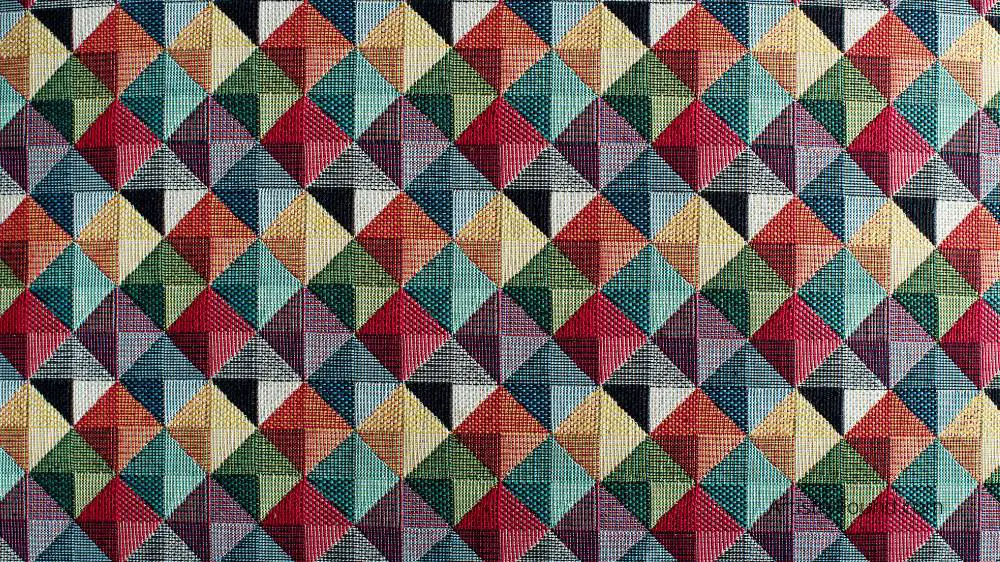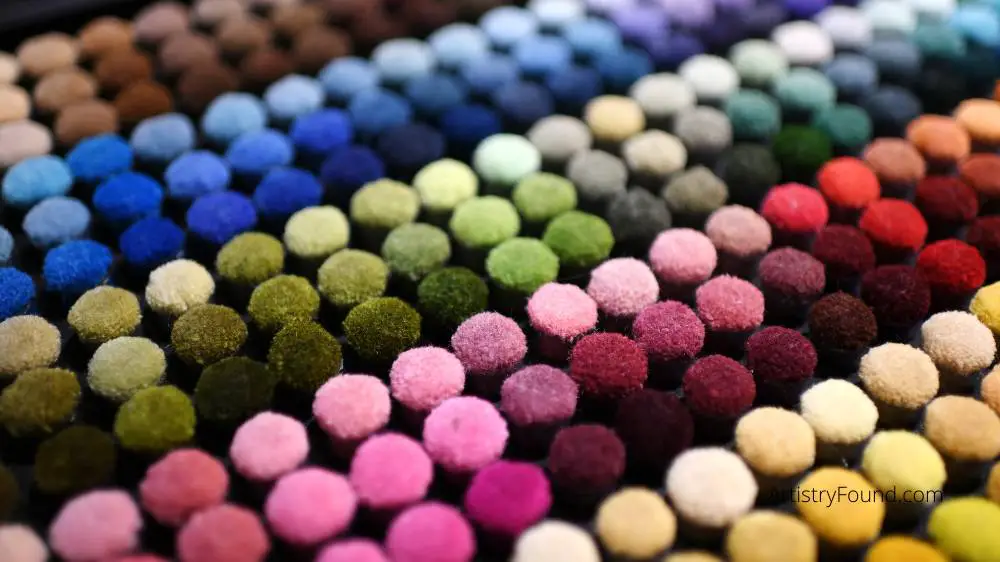What is Textile Art? (With Examples)
You come into contact with textile art every day- from the clothes you wear to the objects decorating your home. Textile art is simultaneously beautiful and helpful. But what exactly is textile art?
Textile art is a type of art that uses animal, plant, or synthetic fibers to create practical or decorative objects. Textiles are made through sewing, weaving, crocheting, knitting, and embroidery. Textile art could be a wall hanging, a rug, a clothing item, or even a sculpture created with fabric.
You don’t have to use a pencil and paint to create art. Some artists use silk, wool, and other textile materials. This article explores what textile art is and some examples of creative work on textiles.
What is Textile art?
One can define textile art as the process of making something using natural fibers (aka Fiber Art). Typically, textile art is more focused on shapes and patterns. The primary sources of textile art are:
· Animal: silk, wool
· Plant: flax, cotton bamboo, jute
· Mineral: fiberglass, asbestos
· Synthetic: rayon, nylon, acrylic, polyester
Essential Note: Plants, animals, and minerals are natural sources, making them a sustainable option for textile art.
The Basics of Textile Art

(This article may contain affiliate links and I may earn a commission if you make a purchase)
Textile fragments have been found dating all the way to prehistoric times (anthropologists estimate that this ranges from 100,000 to 500,000 years ago). Today, artists have continued to reinvent the medium, bringing new applications, materials, and aesthetics to the textile tradition.
It’s believed that people developed textiles to keep warm, protect surfaces, and insulate dwellings during the cold winters. People also used textile arts to make objects that commemorated important events or signaled status, including military uniforms, flags, or ceremonial banners.
Where Did Textile Art Come From?
Textile art is an ancient type of art that has been carried on through different generations. It has a long history dating to ancient Egyptians. Moreover, examples of clothing have been found dating back thousands of years in China.
Historically, most artists who specialized in textiles aren’t well-known today since their work tended to be used in day-to-day life, for instance, coverlets and quilts. We can see what they created, but we don’t always know their names.
Why Is Textile Art Important?
Textile art has been the backbone of human life from as early as the beginning of civilization. It has been used to make tapestries, clothes, and much more. For instance, all clothes are technically considered textile art since the materials used come from animals or synthetic sources.
Moreover, the tradition of textile art is intertwined with the story of international trade. For instance, Tyrian purple dye was a vital trade commodity in the ancient Mediterranean, while the Silk Road carried Chinese silk to Africa, India, and Europe.
The industrial revolution was shaped by innovations in textile art technology- from the spinning jenny and cotton gin to the power loom which became the key to mechanized production.
Examples Of Textile Art
Most cultures globally have their own distinct methods of textile art. However, many modern textile artists are using various techniques to create new and exciting contemporary textile art. Here are some examples of textile art:
Knitted Art
Knitting entails twisting thread into different stitches to create larger patterns. You don’t need a loom, but yarn and large needles. The approach is prevalent in sweaters and blankets. Knitting is usually done by hand, but nowadays there are knitting machines used for large-scale production.
Some artists today are making more creative textile art by co-opting it as a means of expression (yarn bombing). Yarn bombing is a fun contemporary art style where the textile artist, covers items like bicycles, cars, statues, fire hydrants, trees, etc. with knitted decoration.
Crocheted Art
Crocheting is a patterned fabric made of looping material with a hooked needle. One of the most common materials used to crochet is yarn. You can interlock the loops using a crochet hook. The word crochet is from the French word crochet meaning small hook.
Embroidery

In embroidery, an artist uses thread to stitch the decorative textile design onto a fabric such as paper, woven fabric, or leather. Sometimes, other materials are combined, like sequins and beads. The images and patterns often remain within the confines of the frame. An example of ancient embroidery is the Chamba Rumal that dates to the 18th century.
However, in contemporary embroidery, it’s not unusual to see thread and fabric spill from the hoop. Teresa Barboza’s art is an example of modern embroidery, which creates landscapes that extend well beyond the hoop and flow towards the floor.
Quilting And Quilt Art
This technique uses two layers of fabric, often with a soft material placed between the layers before stitching them together. Typically, some quilts are hung as visual art or decoration, while others are used for practical reasons such as keeping warm. An example of quilt art is the 1938 Patchwork quilt (National Gallery of Art Museum).
Woven Art
Weaving entails interlacing two sets of threads. These are called the weft that runs horizontally and the warp that runs vertically. The threads are laced together on a loom at intersecting angles to create a cloth. The warp threads are held tight while the weft is fed through them.
While it’s commonly seen in garments, you can also use weaving to create display artwork. They’re often displayed as wall hangings (textile wall art), with some artists experimenting with stitch length and yarn weight to create highly textured arts.
The types of weave structures you can produce include twill, plain, velvet, and satin.
Hooked Rugs
Yarn Hooking: 14 Fabulous Projects for The Modern Rug Hooker (Amazon)
The technique involves making a rug by pulling fabric or loops through a woven base. It’s done using a crochet-type hooking tool that pulls the fabric through the base material. One of the oldest known hooked rugs is said to be the 19th-century floor mats created in Yorkshire, England.
Laces
This is the art of making lacing; a delicate fabric often made up of yarn and thread. While it’s unknown about the origin, the 16th century saw an increase in the appeal of lace, and hence the technique grew. The triangular Brussels point de Gaze needle lace shawl is an example of lace that dates to 1850.
A common technique of lace-making is tatting. The method is achieved by wrapping threads around two shuttles into patterns, creating rings of designs. Tatting dates to the 17th century and can be used to make hats, purses, and jewelry.
Ropes
Creating rope entails combining different strands of material to create one strong cord. Then, you can connect the strands by twisting or braiding the material together. Ancient Egyptians are said to be the oldest civilization to use ropes.
Canvas Work
The technique includes stitching counted-thread embroidery onto canvas or another type of sturdy material. The most common examples of canvas work are needlepoint, bargello, and petit point.
What’s The Earliest Example of Textile Art?

Textile has long served a practical use and has not generally been considered to be an actual art form (This is a mistake in my opinion). Bayeux Tapestry, made between 1077 and 1092, is probably the earliest surviving example of textile art. While it’s called a tapestry, the artwork is an elaborate embroidery 20 inches high and 23 inches long.
The wool yarn is sewn into figurative scenes telling the story of the Norman Conquest of England and William the conqueror. You can see knights and horses charging forth, men on ships crossing the ocean, and heroic battles in detail.
Interestingly, the artwork’s creator remains a mystery, though most researchers believe a female likely made it as embroidery was categorized as women’s work during those days.
Why Isn’t Textile Art Considered a Fine Art?
Textile art on its own isn’t generally deemed fine art because it has typically been used for more practical purposes. For example, textile art is often used to make lovely items such as blankets and others that help daily, while fine art is made for viewing and entertainment purposes only.
However, it’s vital to note that sometimes you can make textile art without a practical purpose. For example, tapestries were used historically to insulate the walls of a castle. Today, they are used for decoration.
Having said that, many of today’s contemporary fine artists are using textiles more and more in their work. These textile-based modern art pieces should unquestionably be characterized as fine art.

